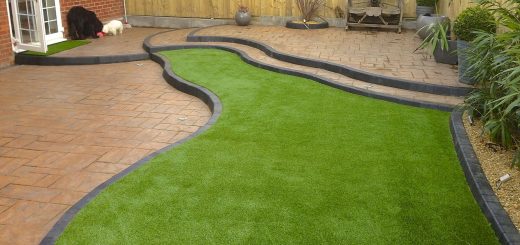Why Synthetic Turf Happens To Be An Environmentally Friendly Alternative
People are continuously searching for ways that their individual choices can make a difference to the earth, and from cutting down greenhouse gas pollution to saving biodiversity, synthetic turf could make a big impact. Regular grass often brings about wasted water and hazardous home gardens as a result of watering and the usage of pesticide sprays and herbicides. Synthetic grass is a chance to decrease your carbon footprint, reduce your water consumption, and safeguard nearby animals- all with only one life-style change. Click here for more tips www.artificialgrassmaintenance.co.uk
Reduces Water Usage
In order to look after regular grass frequent watering is definitely important, especially during Summer months, and this significant water usage has negative impacts on the earth. One of the benefits of synthetic turf is that minimal to no watering is required to keep it looking great. Artificial grass does not dehydrate or die in the scorching heat like regular grass, hence with reputable companies like¦, you don’t need to to waste valuable water resources on grass.
Saving resources such as water is becoming more valuable and ought to factor into your decision concerning grass. Artificial grass is only going to demand hosing down if mud or dirt needs to be cleared, and usually a small amount of rainfall is going to do this job on your behalf!
Decreases Carbon Foot Print
If cutting your carbon footprint is critical to you then artificial grass would be the path to take. The lower maintenance that it requires will mean that minimal equipment is required- no lawn mowers, grass clippers, or scarifiers necessary, all of which use fossil fuels. Synthetic turf remains clipped and weedless from the moment it is installed, which means you don’t need to rely on any type of damaging lawnmowers or clippers.
Not using these particular pieces of equipment will reduce your petrol and diesel fuel usage, and as a consequence cut down greenhouse gas emissions.
Toxicity
Grass demands the use of fertilisers, pesticides, and other harsh chemicals to kill weeds and to keep your grass looking fresh. In addition to being made from materials such as fossil fuels (further increasing greenhouse gas emissions), you can run the risk of your grass becoming toxic. This creates a dangerous environment, especially for pets and children.
No Poisonous Run-off
An additional negative effect of applying harsh chemicals on grass lawns is risky contaminated run-off that happens when it rains. The rainwater carries the chemicals that are upon the grass across surfaces and can wind up in local aquatic systems, including ponds and rivers, in some instances wiping out the aquatic life. Significant levels of toxic chemical substances running into marine environments can also lead to algal blooms, which in turn severely decreases the o2 levels in the water. The marine life can then get sick and/or die, resulting in a population decline, and reducing regional biodiversity.
Oftentimes these agal blooms also can become harmful to humans given that they result in bacteria growth and higher toxin levels in water. This may cause people to become sick if they encounter the toxified water, either through consuming the contaminated water or eating tainted fish.
Artificial turf has no requirement for any harsh chemical contaminants and provides an alternative to the damaging impacts of sustaining regular grass.



